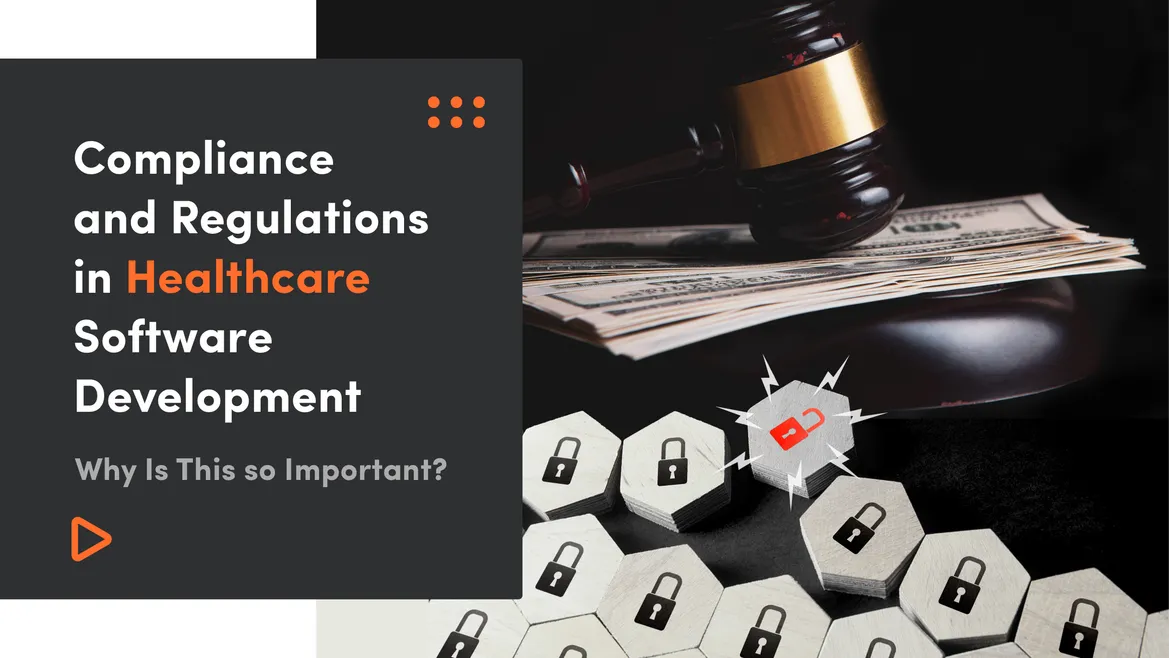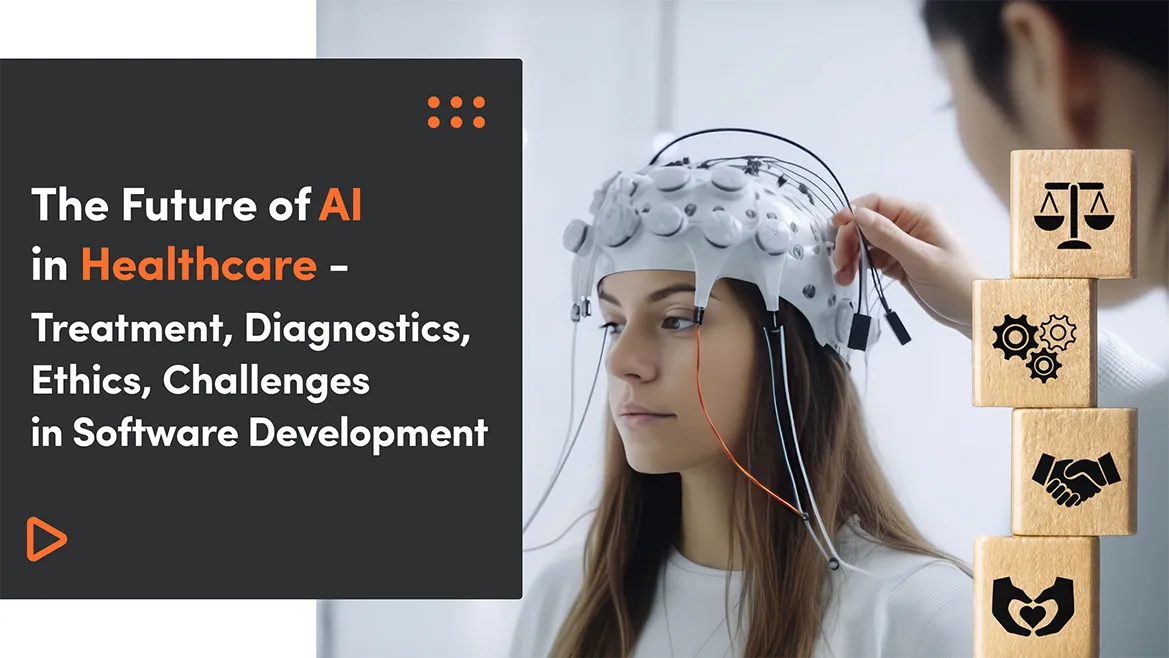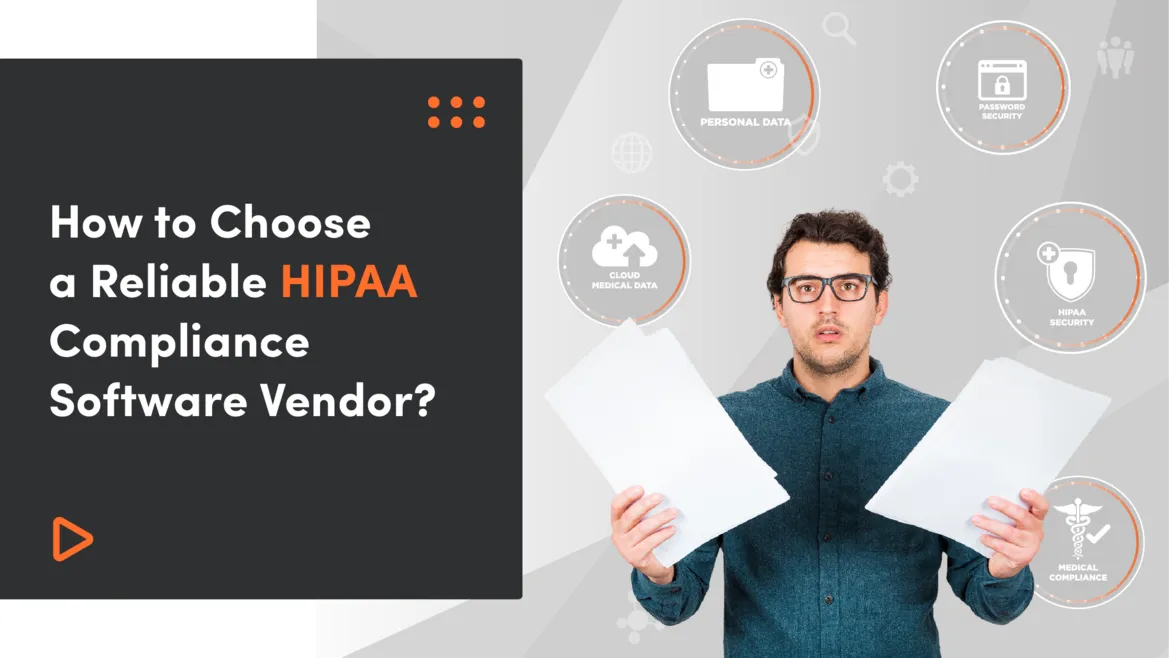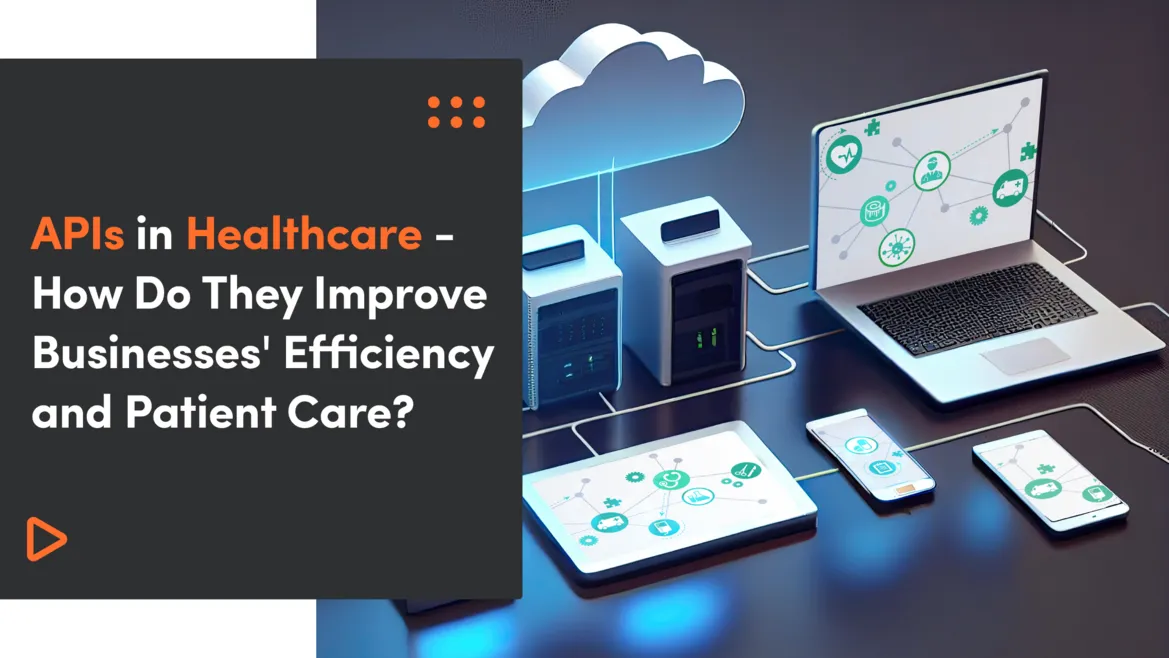According to the 2023 Cost of a Data Breach Report, the average cost of a healthcare data breach was the highest among all industries at $10.93 million. Health and Human Services, in their breach report, stated that over 15 million records have been compromised by data breaches. Both reports conclude that the healthcare industry experiences more data breaches than other sectors.
The largest healthcare data breach in 2022, at OneTouchPoint, affected 4.1 million people, which is not even close to the biggest incidents of the year. The largest penalty was given to Oklahoma State University’s Center for Health Services, which was forced to pay $875,000 after criminal hackers compromised its server. The consequences of non-compliance are severe and can be seen from the above statistics.
The corporations responsible for negligence must bear a heavy financial burden as authorities worldwide tighten up data safety acts. With ever-changing rules and regulations, it has become difficult for healthcare organizations to stay compliant. In this article, you will learn about compliance and regulations in the healthcare industry and why businesses need to consider regulations while developing a healthcare app.
The article will descriptively explain the following:
- What do you need to know about compliance and regulation in healthcare?
- What are the healthcare regulations in the USA, UK, Europe and Asia?
- What is HIPAA and how much money will the organization need to pay if it does not comply with HIPAA?
- What is risk assessment analysis and how to conduct one for your organization?
- Top healthcare compliance software
- Suggested checklist to make your app HIPAA-compliant
What Do You Need to Know About Healthcare Regulatory Compliance Software?
Legal compliance programs are essential to guarantee the safety of patients' data and their privacy. As a result, stakeholders in the organizations should prioritize compliance management with regulations and carefully research the compliance program for the industry.
Here are some most important regulations that all organizations should be monitoring closely:
HIPAA Regulatory Compliance
- Country of Origin: USA
- Year Founded: 1996
Under HIPAA, organizations must put administrative, physical, and technical protections in place to effectively manage and secure patient data while limiting access to authorized people only. Patients can be certain that their protected health information (PHI) won't be used improperly or exposed without permission.
Data Security Regulations (PHI)
- Country of Origin: USA
- Year Founded: 1996
TrustWave reported that a single healthcare record is sold for $250 via darknet sites. Therefore, there is a need for data protection regulation that focuses on the safety of Protected Health Information (PHI) and healthcare compliance management software.
OSHA Regulatory Compliance
- Country of Origin: USA
- Year Founded: 1971
OSHA is a different regulatory requirement crucial to preserving the health and safety of employees in an organization. Concerning the safe handling of hazardous materials, this rule requires establishments to have suitable personal protective equipment (PPE), ventilation systems, and OSHA compliance program training.
FWA Regulatory Compliance
- Country of Origin: USA
- Year Founded: 2006
Billing for services that haven't been used or up-coding procedures are only two examples of fraudulent conduct. It also requires organizations and payers to implement efficient monitoring programs to spot fraudulent behavior and avoid these illegal actions quickly. Additionally, it requires informing the appropriate authorities of any suspected fraudulent behavior so they can conduct further inquiries.
Food and Drug Administration (FDA)
- Country of Origin: USA
- Year Founded: 1906
The FDA oversees pharmaceuticals, medical equipment, and other items used in healthcare companies. Their major objective is to ensure that the items above are reliable, effective, and advantageous to society. FDA also ensures clear, accurate labeling and packaging for such products.
Federal Trade Commission (FTC)
- Country of Origin: USA
- Year Founded: 1914
FTC is vital in promoting clients' data privacy and offering advice on safeguarding healthcare-related information. Those who breach the agency's enforced customer protection law and acts must be brought to justice by the FTC.
Office of Civil Rights (OCR)
- Country of Origin: USA
- Year Founded: 1980
The OCR forbids discrimination against persons based on race, color, age, sex, disability, or country of origin. OCR examines complaints about civil rights violations and HIPAA infractions to uphold civil rights legislation and Privacy Rule standards.
ISO IEC 62304
- Country of Origin: USA
- Year Founded: 2006
A compliance program with the globally accepted standard IEC 62304 is required for medical software developers entering the worldwide market. These compliance rules apply whether the software is a medical device in and of itself (SaMD) or operates as an important element of the device (SiMD).
The ISO framework specifies the processes, tasks, and activities that developers must follow to guarantee compliance management with the software life cycle processes.
Office of the National Coordinator (ONC)
- Country of Origin: USA
- Year Founded: 2009
ONC is designed to promote a national healthcare information technology (HIT) infrastructure and oversee its development globally. Its duties involve policy coordination, strategic planning for the adoption of IT and healthcare information exchanges (HIE), and establishing governance for the electronic exchange.
Regulations in the UK for Healthcare Compliance
Here's a list of regulations in the UK that are enforced to protect the safety and privacy of patient data in the healthcare industry.
- Access to Health Records Act 1990
- Children Act 1989
- Community Care (Direct Payments) Act 1996
- Community Health Councils (Access to Information) Act 1988.
- Health Act 1999, 2006 & 2009
- Health and Medicines Act 1988, 2001 & 2012
- Health Authorities Act 1995
- National Health Service and Community Care Act 1990
- Patient Rights (Scotland) Act 2011
Healthcare Laws in Asia
Asian and Middle Eastern countries have different government rules which directly and indirectly protect the safety and privacy of patients' data. Some of the most notable authoritative bodies to enforce, monitor, and report the law are as follows:
- Asian Harmonization Working Party (AHWP)
- Asia-Pacific Economic Cooperation (APEC)
- Association of Southeast Asian Nations (ASEAN)
- Eurasian Economic Union (EAEU)
What Is HIPAA and Why Is It Important for Medical Apps?
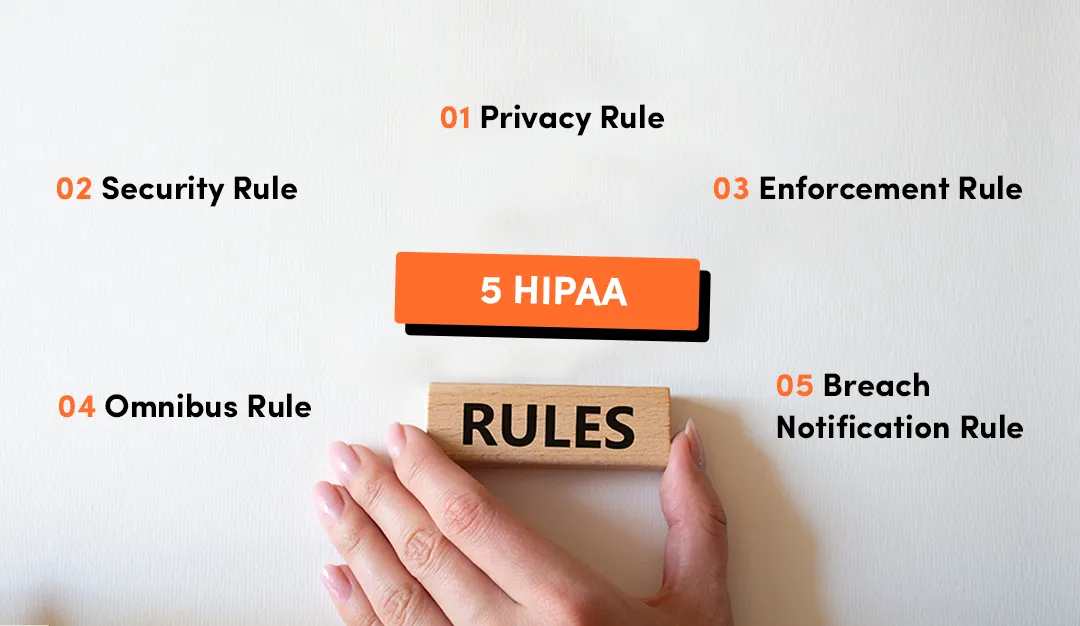
Health Insurance Portability and Accountability Act — is a series of rules, first presented in 1996 and recently revised in 2013.
There is no need to go through hundreds of law pages to establish technology criteria for privacy in apps. It consists of the following provisions:
- Privacy Rule: The Privacy Rule sets legal standards for patients’ rights to Protected Health Information (PHI). It includes patients’ rights to access PHI, healthcare providers’ rights to deny access to PHI, the contents of Use and Disclosure of Release Forms and Notices of Privacy Practices, and more.
- Security Rule: The rule outlines standards for the secure transmission, handling, and monitoring of ePHI. The rule applies to all entities because of the potential sharing of ePHI. The rule involves the integrity and safety of ePHI, including physical, administrative, and technical safeguards that must be in place in any organization.
- Enforcement Rule: The Enforcement Rule establishes directives around compliance, investigation, and penalties for violation. The rule revolves around financial liabilities caused by non-compliance with privacy and safety requirements.
- Omnibus Rule: The Omnibus Rule outlines the definition of a “business associate” to include all entities that create, receive, transmit, and maintain PHI on behalf of a covered entity. The law makes it clear that companies that store PHI on behalf of healthcare organizations will be titled as business associates.
- Breach Notification Rule: The Breach Notification Rule outlines practices that covered entities and third-party business associates must follow in the event of a data breach containing PHI or ePHI. It lays out requirements for breach reporting depending on the size and scope of the violation. Organizations are required to schedule alerts based on the size and scope of the breach to report to HHS OCR.
The HIPAA regulation broadly describes three types of data safeguards:
Technical data safeguards: Encryption, secure connections and protocols, and other technology-related safety best practices relevant to applications are examples of technical data protection.
Physical data safety measures: Limiting physical access to servers and other equipment that may store PHI or enable sensitive data exchange is normally indicated. Furthermore, organizations must have a proper firewall and antivirus software in place to secure software physically.
Administrative data safety measures: Finally, administrative data protections include, employee training and management, privacy policies and procedures, privacy practice notifications, and other activities.
Why is it important?
Given the sensitivity of medical data, any breach or violation can result in costly implications for patients, healthcare software suppliers, and medical institutions.
All healthcare apps must comply with government regulations. Failure to comply can result in large fines for hospitals and healthcare providers. While an individual data breach may cost over $50,000, the cumulative damages might be in the millions.
The regulations contain stringent guidelines for handling, transmitting, and preserving personal information. Any modern I.T. architecture is built on a modular, microservices-based foundation. The engineering team must guarantee safety criteria are fulfilled throughout the app development.
Try our developers.
Free for 2 weeks.
No risk. Just results. Get a feel for our process, speed, and quality — work with our developers for a trial sprint and see why global companies choose Selleo.
HIPPA Penalties and Fines
Each type of violation bears a unique penalty. It is up to OCR to decide a financial penalty within the proper range. When establishing fines, OCR considers various variables, including the length of time a breach was permitted to continue, the number of persons affected, and the nature of the material revealed. The four tiers for penalties are as follows:
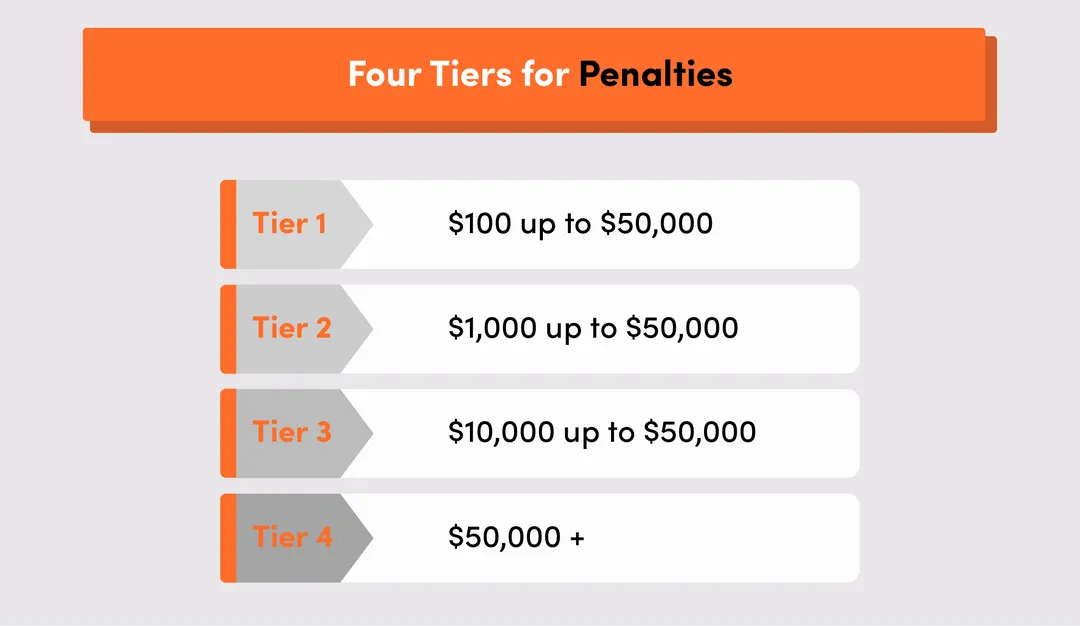
Examples Recent Violations
David Mente, MA, LPC - August 2023
HHS Office for Civil Rights Enters Into $15,000 Settlement Resolving Potential Violation Under the Right of Access Initiative
Life Hope Labs - April 2023
Lab Pays $16,500 Settlement to HHS, Resolving Potential Violation over Medical Records Request.
Banner Health - February 2023
HHS Office for Civil Rights settles investigation with Arizona Hospital System following cyber hacking with a whopping amount of $1,250,000.
How to Make Your Software HIPAA-Compliant? - Legal Acts to Follow – Checklist
Due to the sensitivity of the data involved in Healthcare, HIPAA compliance is very important. A data breach will have a severe financial and practical impact not only on the patient but on the software vendors and organizations as well.
HIPAA-compliant app development ensures that the organization has not broken any legal act or law. These are the most trusted apps from the users' perspective.
Here's a checklist that healthcare businesses should follow to comply with government acts and ensure user privacy and safety in software development.
Step 1: Understand HIPAA
The first step involves knowing the rules for privacy, safety, and breach notification. For example, you should be familiar with the many categories of PHI, what constitutes a violation, and the potential consequences. If you are unsure, speaking with a specialist might be beneficial.
Step 2: Identify and Classify PHI
Any PHI that the app touches must be identified and classified. This includes any information that can be used to identify a person concerning their health status, care, or payment for healthcare.
Step 3: Incorporate Necessary Security Key Features
Healthcare apps require strong safeguards such as encryption, user authentication, automated log-off, and secure APIs. The app should guarantee that PHI is securely sent, stored, and disposed of. Furthermore, the app should contain an emergency access process to guarantee that PHI is available during a crisis.
Step 4: Implement Role-Based Access
Only authorized personnel have access to sensitive data due to role-based access. This includes creating user roles and permissions and ensuring users can access the required information.
Step 5: Regular External Audits and Maintenance
Regular audits aid in the detection of possible breaches and the maintenance of compliance. It would be beneficial if healthcare providers considered documenting all PHI access and examining these logs regularly for any inconsistencies.
Step 6: Create a Risk Management Strategy
A strategy for controlling the risk and minimizing the effect should be in place in a breach. Regular data backups, a disaster recovery strategy, and a data breach response procedure should all be included.
Step 7: Acquire a HIPAA-Compliance Certification
Gaining a valid certification from a trustworthy third-party auditor can ensure compliance and create trust in clients. It demonstrates that the application has passed thorough compliance assessments.
Step 8: User Training and Awareness
HIPAA compliance processes include training and awareness of rules and regulations. Your app's users, particularly healthcare professionals, should understand how to utilize it according to the rules.
Step 9: Maintain Ongoing Compliance
Changes in technology, legislation, or the functionality of apps may need adjustments to compliance plans. Audits, updates, and regular employee training can help to ensure continued compliance.
How to Perform HIPAA Risk Assessment
HIPAA consists of two major rules: the Security and Privacy Rule. The Privacy Rule governs who has access to personal health information, how it is used, and when it can be shared. The Security Rule requires covered businesses to use adequate administrative, physical, and technological protections to secure ePHI.
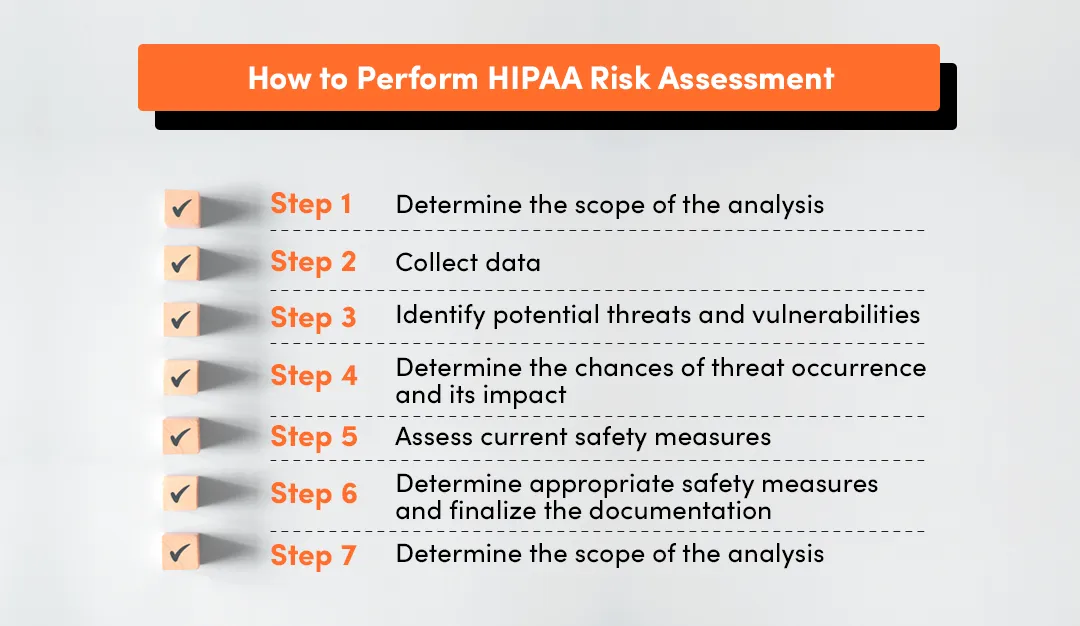
A comprehensive risk assessment for HIPAA compliance management software involves the following steps:
Step 1: Determine the scope of the analysis
Any ePHI, regardless of its source, location, or the electronic media used to produce, receive, preserve, or transmit it, is included in a risk analysis.
The analysis must cover all the "Reasonable" risks and vulnerabilities to the integrity, confidentiality, and availability of the ePHI. Here, "reasonable" refers to any threats to HIPAA compliance, such as hackers, malicious threats, and human errors due to a lack of knowledge and training.
Step 2: Collect data
Gather complete and accurate information about ePHI use and disclosure. This can be done by:
- Analyzing past and current project data
- Performing interviews
- Reviewing documents
- Using additional data-gathering tactics (If needed)
Step 3: Identify potential threats and vulnerabilities
Analyze the threats and vulnerabilities that exist for each piece of regulated data.
Step 4: Determine the chances of threat occurrence and its impact
Once a list of possible threats and vulnerabilities is accomplished, the next step is calculating the chances of threat occurrence. Labeling each as High, Medium, or Low is a common tactic, as is adding a number weight representing the chance of occurrence.
Detail the possible outcomes of each data threat, such as:
- Unauthorized access or disclosure
- Permanent loss or corruption
- Temporary loss or unavailability
- Loss of financial cash flow
- Loss of physical assets
Estimate and document the impact of each outcome. Measures can be qualitative or quantitative.
Step 5: Assess current safety measures
Keep a record of precautions to reduce threats to ePHI. Both technological and non-technical measures should be used:
- Access control, authentication, encryption, auto-logoff, auditing, and other hardware and software restrictions are examples of technical measures.
- Non-technical controls include managerial and operational measures, including policies, processes, and environmental or physical safety measures.
- Examine the implementation and configuration of each safety measure to see whether it is appropriate and effective.
Step 6: Determine appropriate safety measures and finalize the documentation
Determine the possible safety solutions to lower each risk to an acceptable level. The measure's efficacy, the regulations governing its execution, and any organizational policy or procedural requirements should all be considered. Document all findings.
Step 7: Periodically review and update the risk assessments
Create a policy outlining how frequently risk assessments should be performed. One should be carried out at least once every year. Include instructions on updating the evaluation every time something changes, such as your security procedures or policies. After the evaluation, keep track of each modification.
Healthcare Compliance Software - Examples of Applications In 2023
Right healthcare compliance software can assist businesses in streamlining compliance. Here are some of the best Healthcare Compliance software examples of 2023.
NavigateHCR: It is a collection of healthcare compliance management software tools that assists practices in managing communications and data in a way that complies with the Affordable Care Act (ACA) requirements. The compliance tools assist customers in understanding their ACA exposure to lower their risk of violations.
Converge: Verge Health offers Converge software that helps companies with organizational compliance, employee and patient safety, and contract management. Providers can monitor safety measures, check vendor credentials, and carry out compliance duties like dummy exams with its services.
Jotform: It is a HIPAA-compliant form builder that assists practices in producing interactive digital forms. The forms are simple to connect with well-known programs, always encrypted, and always saved securely.
Absolute: The app focuses on safeguarding data across devices and applications. The program aids companies in safeguarding data across all digital platforms and physical locations. Additionally, it aids in identifying infractions and getting organizations ready for audits at any moment.
Healthicity: The app aims to make healthcare compliance simpler. Using all the tools from the app, you can identify compliance risks to your medical practice, handle compliance-related issues from beginning to end, and train staff members.
MedTrainer: The healthcare compliance software specializes in compliance optimization. Its tools cover compliance, certification, and learning.
HIPAA Implementation in Custom Healthcare Software Development
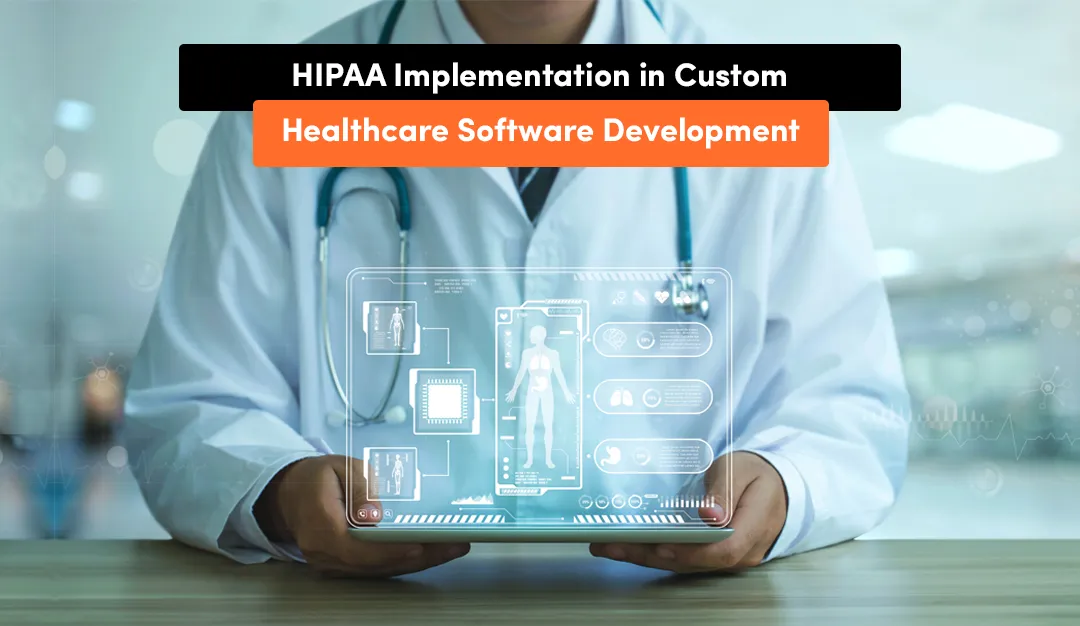
According to the U.S. Bureau of Labor and Statistics, employment in healthcare is projected to grow 14% from 2022 to 2028. It is much faster than the average for all occupations.
Health organizations are pressured to run their businesses more efficiently as the industry grows. Custom healthcare compliance software is the key to improving productivity. Custom apps make it easier for organizations to adapt and scale.
Every healthcare organization is different, and the industry is incredibly different from other businesses. This means ready-made healthcare compliance software wasn’t built with healthcare in mind.
Compliance is critical in healthcare software development, but third-party software may lack the ability to stay compliant in every region. Different government directives are implemented in different regions of the world, and one compliance software-fits-all is seemingly impossible.
One of the biggest advantages of having custom healthcare compliance software is digital transformation with a far-reaching impact. It makes it easier for employees to get work done and frees them up to focus on the more critical matters. Having digital records can also reduce the risk of mistakes or misreporting.
Summary
With the increase in electronic health records (EHRs), concerns over the risk of data breaches have also increased. Therefore, data safety has become the most important aspect of regulatory compliance. Governments worldwide have enforced legal acts to ensure client data safety through proper encryption measures, access controls, and training programs for employees who handle PHI.
Another crucial aspect where regulatory compliance is important is billing practices. Fraudulent billing schemes can lead to substantial financial penalties for providers or even criminal charges if evidence of fraudulent intent exists.
To prevent fraud within the system, regulators have established specific codes and guidelines that direct how bills should be submitted for payment.
Regulatory compliance encompasses many complex areas where failure may result in significant consequences for patients' well-being and providers' reputations and financial stability.
Organizations should regularly educate themselves with recent updates in legal acts and directive rules.
If you do not know what you need to do then speaking with an expert third-party business associate can help you understand the regulatory compliance.
